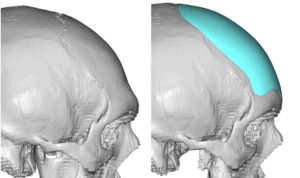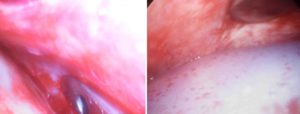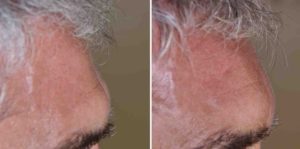Background: The brow bones are an important aesthetic feature of the male face. Some mild ‘protrusion’ of them, and the presence of a visible brow bone break, is an identifying and attractive male feature. But when the amount of brow bone protrusion becomes too strong or prominent it becomes a dominant facial feature that is viewed as distracting and causes an angry or mean looking face.
The traditional treatment of excessive brow bone protrusion is brow bone reduction. For most men this means a bone flap setback method which must be done through either a coronal scalp or a horizontal forehead wrinkle incision. While very effective the scar tradeoff to do the operation must be considered very careful to avoid trading off one aesthetic problem for another one.
As some prominent brow bones in men are associated with backward slope to the forehead above it, an alternative approach to brow bone reduction is to augment the forehead above it. By filling in the forehead the degree of brow bone protrusion becomes less. In essence this is a form of pseudo brow bone reduction surgery. Computer imaging will help to determine if a forehead augmentation is a good alternative to actual brow bone reduction surgery.

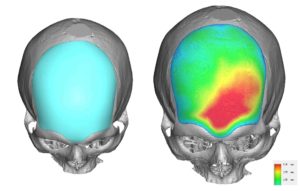

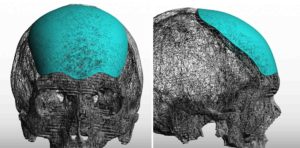
Case Highlights:
1) Prominent brow bones can be treated by either brow bone reduction or fished augmentation above it.
2) Filling in the more retroclined forehead slope above the brow bones is a method of ‘pseudo’ brow bone reduction surgery.
3) A custom forehead implant offers the most accurate method of forehead augmentation though the smallest possible scalp incision.
Dr. Barry Eppley
Indianapolis, Indiana



